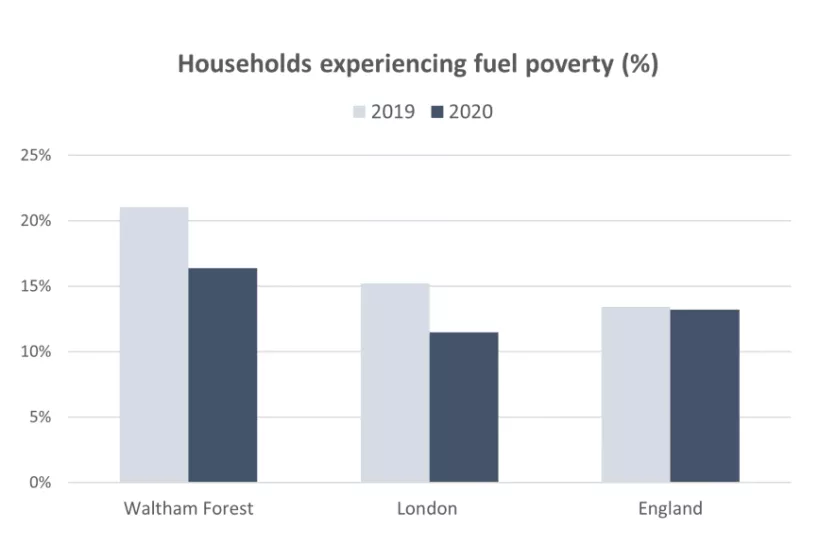Last updated: 17 June 2024
Next review: 17 June 2025
This content is part of the Waltham Forest Joint Strategic Needs Assessment (JSNA). To see other JSNA content, visit the JSNA landing page
A household is considered to be in fuel poverty if they are living in a property with an energy efficiency rating of band D or below and when spending the required amount to heat their home leaves them with a residual income below the official poverty line. This is based on the ‘low income, low energy efficiency’ (LILEE) methodology for modelling fuel poverty estimates.
There is compelling evidence that the drivers of fuel poverty (low income, poor energy efficiency, and energy prices) are strongly linked to cold homes [1]. Evidence shows that living in cold homes is associated with poor health outcomes and an increased risk of morbidity and mortality for all age groups. Studies have shown that more than one in five (21.5%) excess winter deaths in England and Wales are attributable to the coldest quarter of housing [2].
In 2020, an estimated 16.4% of all households in Waltham Forest (approximately 17,075 households) were living in fuel poverty. This percentage was higher than the England average of 13.2% and the London average of 11.5%. These data are based on a modelled estimate, and it is important to consider the prevailing cost of living crisis, which has significantly impacted on people's ability to afford adequate heating of their homes.

Source: OHID Public health profiles. Data from the Department of Business, Energy and Industrial strategy. Date accessed: 26 March 2023.
References:
[1] Wilkinson P, Landon M, Armstrong B, Stevenson S, Pattenden S, McKee M and Fletcher T (2001). Cold Comfort: The Social and Environmental Determinants of Excess Winter Deaths in England, 1986–96. Date accessed: 05 May 2023
[2] UCL Institute of Health Equity (2011). The Health Impacts of Cold Homes and Fuel Poverty. Data accessed. Date accessed: 05 May 2023